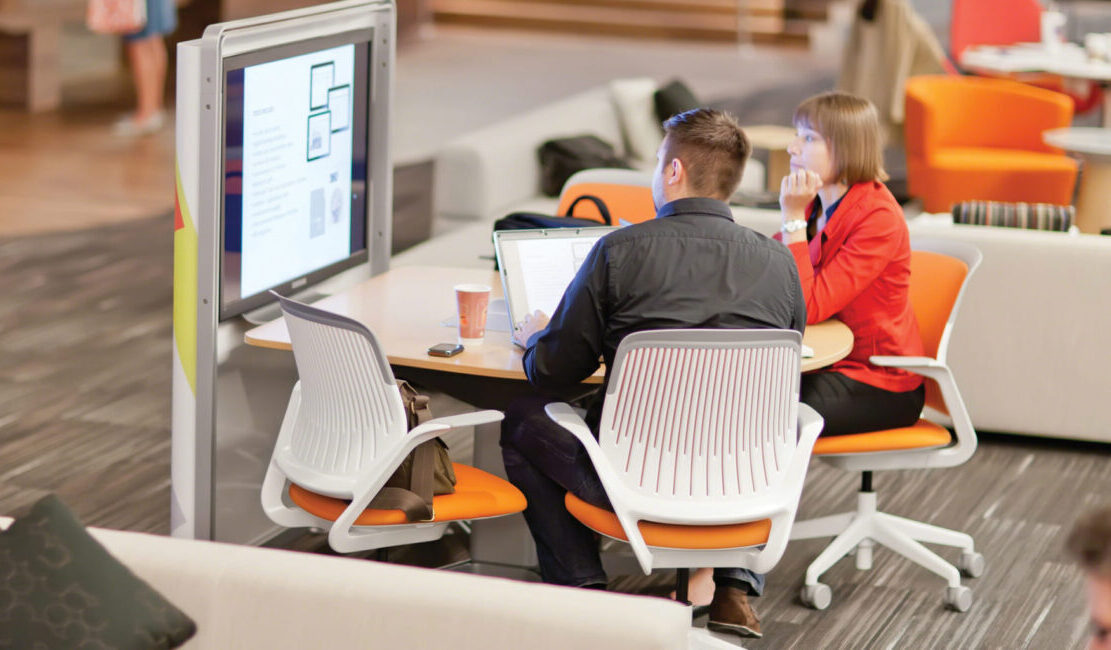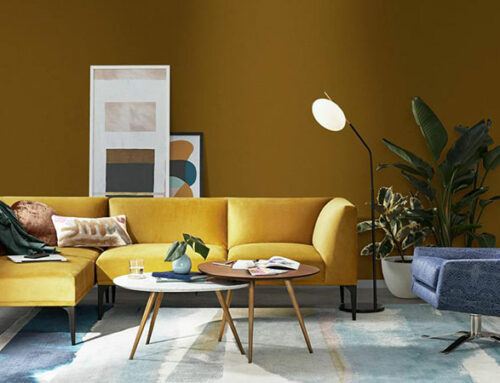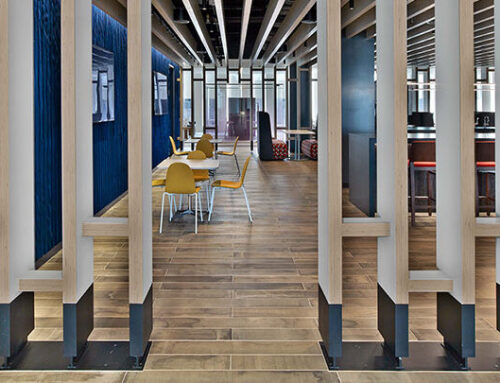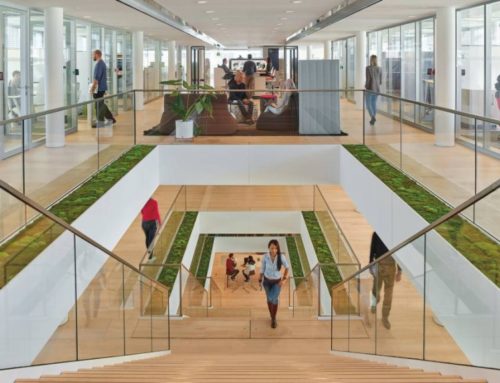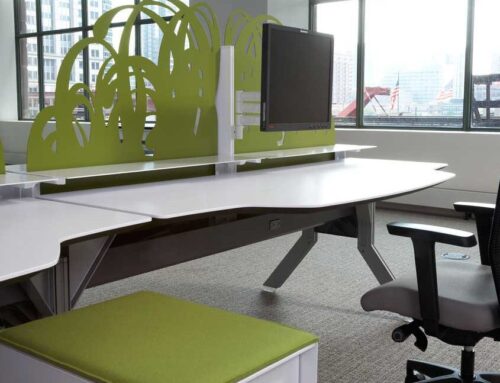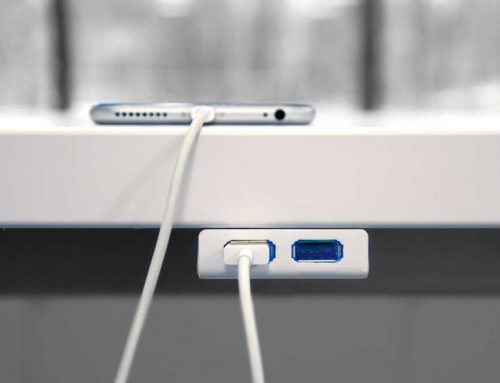Today so much of our work happens away from the primary workstation. The casual atmosphere draws us in, but often, these spaces do not support our work. When designing shared spaces, consider these performance principles:
Posture: Support the body in a posture appropriate for the task, whether lounge, task, stool-height or standing
Proximity: Intentionally plan the relationships between people, their tools, the furniture, and the overall space
Personality: Express the unique brand and culture of an organization to attract and retain talent. When these principles have been considered in the design, good things happen:
Productivity: Individuals and teams can work better collaborating, socializing or focusing
Psychological comfort: People feel good and want to use the spaces
Socialize
This relaxed, social setting is ideal for building connections with colleagues. Surfaces for technology and access to power support working alone and together.
Proximity: Thoughtful selection of seating elements similar in height and recline ensures a democratic experience
Posture: Informal postures foster open connections with colleagues
Proximity: Access to personal tables and power provide everyone with the tools to get work done
Collaborate
The right mix of furniture and work tools optimizes this space for generative collaboration. Standing postures promote active participation, and digital and analog displays keep content visible.
Proximity: Mobile tools allow groups to control their content and toggle between analog and digital formats to support workflow
Posture: Offering a standing posture promotes an active space that naturally supports generative behavior
Proximity: Arranging the table and tools at standing height allows users to have eye contact and equally contribute to the conversation
Focus
When users need to retreat, this Brody setting offers task and lounge postures for solo work.
Privacy: Integrated screens keep visual distractions to a minimum allowing users to stay in the flow
Posture: Providing multiple postures allows users to work the way they prefer
Personality: Thoughtfully selected surface materials, patterns, and color add a shot of personality to the workplace
If your company goal is to create maximum performance and productivity in your workspace, contact one of our office furniture/office space design experts. Let AFD Contract Furniture create a work environment tailored to your company needs and workflow. We offer comprehensive services from planning and design to service and financing. Call us today!


